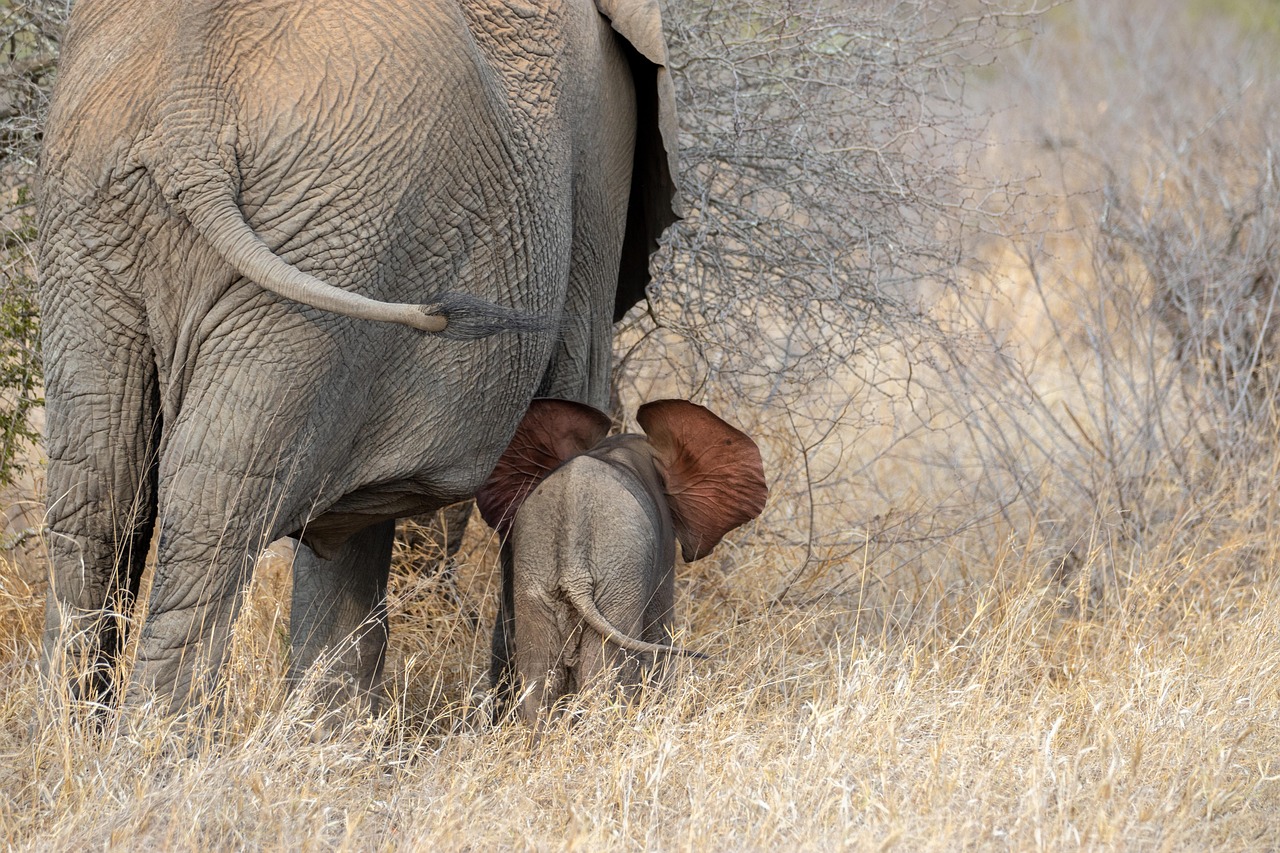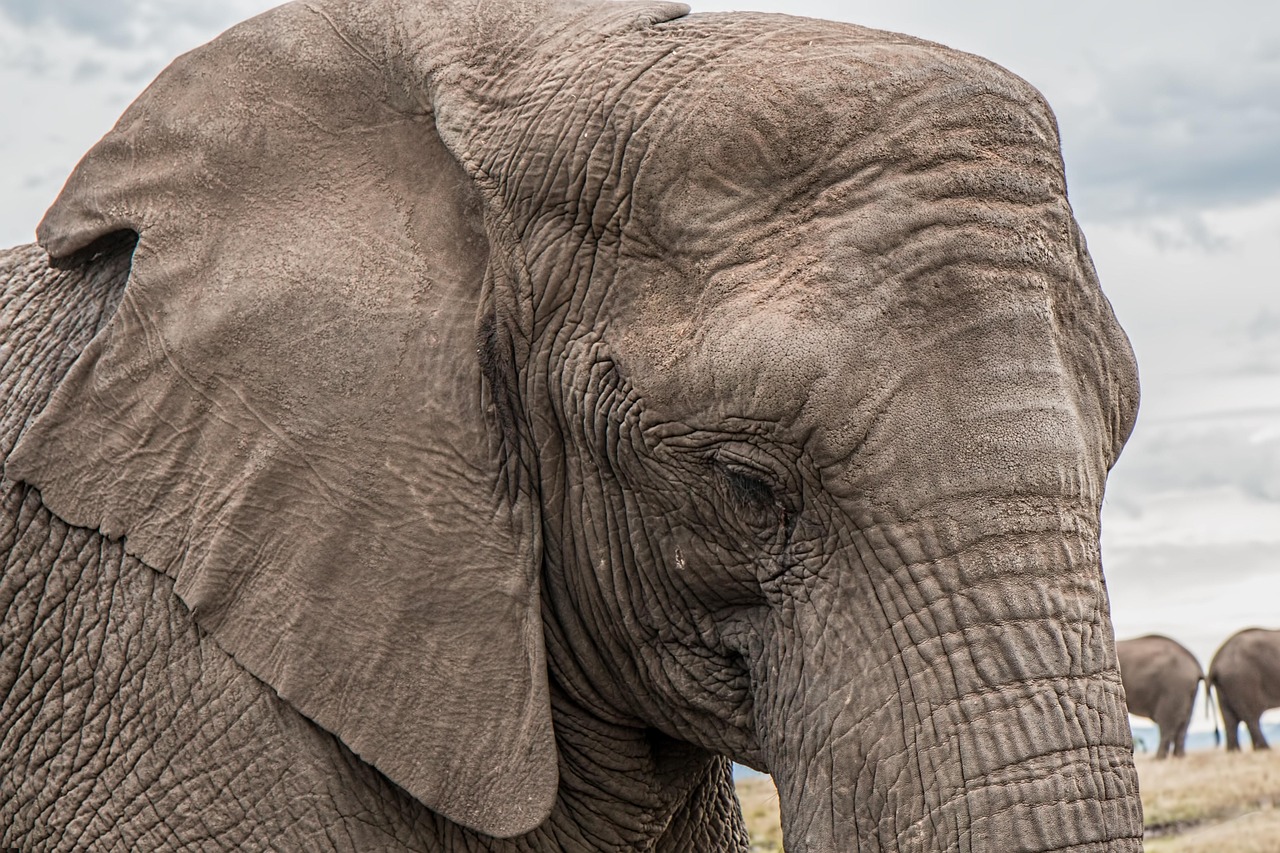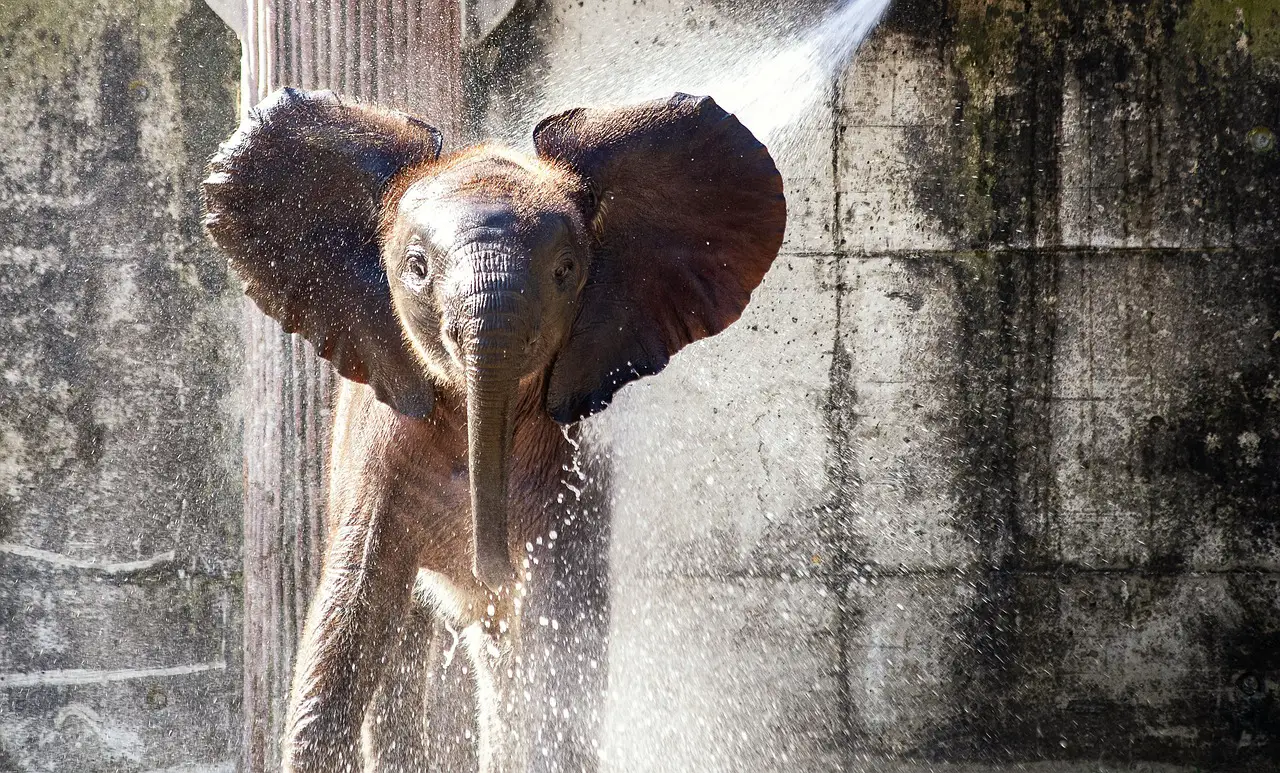To manage elephant ears that are taking over your garden, start by pruning back the leaves and removing any excess plants. Regular maintenance, including dividing and relocating them, can help control their spread. Consider planting them in containers to limit their growth space.
Understanding Elephant Ears
Elephant ears are popular ornamental plants known for their large, dramatic leaves. They belong to the genera Alocasia and Colocasia and thrive in warm, humid environments. These plants can grow quite large, making them a striking addition to gardens and landscapes. However, their rapid growth can sometimes turn into an overwhelming presence in your garden.

Typically, elephant ears are grown for their lush foliage. They can reach heights of up to 6 feet, and their leaves can be as wide as 3 feet across. While they offer a tropical aesthetic, they can quickly become invasive if not properly managed.
Identifying Overgrowth Issues
When elephant ears start to take over your garden, it’s essential to identify the extent of the problem. Here are some signs that indicate your elephant ears are outgrowing their space:
- Leaves crowding out other plants
- Roots breaking through pathways or borders
- Stunted growth of nearby plants due to lack of sunlight
- Difficulty maintaining an organized garden layout
Recognizing these signs early can help you take action before the situation gets worse. It’s important to understand that while elephant ears can be beautiful, they require ongoing care and management.

Effective Management Strategies
There are several strategies you can employ to keep elephant ears in check within your garden. Combining these methods will yield the best results:
Pruning
Regular pruning is one of the most effective ways to control elephant ears. Pruning involves cutting back excessive foliage and removing dead or yellowing leaves. This not only helps maintain the plant’s size but also promotes healthier growth.
Dividing the Plants
Dividing elephant ears is another excellent strategy. This involves separating a mature plant into smaller sections. Each section can then be replanted elsewhere in your garden or given away to friends. The best time to divide elephant ears is in the spring before new growth begins.

Relocating
If you find that certain areas of your garden are overcrowded with elephant ears, consider relocating some plants. Digging them up carefully and replanting them in a less congested area can reduce competition for resources among your plants.
Container Planting
For those who want to enjoy elephant ears without the risk of overgrowth, consider planting them in containers. This allows you to control their size and growth more effectively. Containers also provide better drainage, which is beneficial for the health of the plant.
Challenges with Elephant Ears
Although elephant ears are relatively easy to grow, they do come with their own set of challenges. Here are some common issues you may encounter:

| Challenge | Description |
|---|---|
| Pests | Elephant ears can attract pests like aphids and spider mites, which may damage leaves. |
| Disease | Overwatering can lead to root rot and fungal infections. |
| Sunlight Requirements | These plants need partial to full shade. Too much direct sunlight can scorch their leaves. |
By being aware of these challenges, you can take proactive steps to keep your elephant ears healthy and manageable. Regular inspection and care will ensure that they remain a beautiful part of your garden without taking over.
Preventing Overgrowth of Elephant Ears
Preventing elephant ears from overtaking your garden requires a proactive approach. By implementing a few key strategies, you can keep these plants in check and ensure they enhance your garden without becoming a nuisance.
Choosing the Right Location
The placement of elephant ears in your garden is crucial for managing their growth. Here are some tips to consider:
- Avoid Crowded Areas: Plant elephant ears in areas where they have space to grow without crowding other plants.
- Consider Drainage: Choose locations with good drainage to prevent waterlogging, which can lead to diseases.
- Sunlight Exposure: Position them in partial shade, as too much direct sunlight can stress the plants and lead to unhealthy growth.
Soil Preparation
Well-prepared soil is essential for healthy plants. Follow these guidelines for optimal soil conditions:
- Improve Drainage: Incorporate organic matter, such as compost or peat moss, to enhance soil drainage.
- Maintain Nutrient Levels: Regularly test your soil for nutrients and pH levels to ensure the plants have the necessary elements for growth.
- Mulching: Apply a layer of mulch around the base of the plants. This helps retain moisture and suppress weeds.
Watering Practices
Elephant ears thrive in moist conditions, but overwatering can lead to problems. Here are some effective watering practices:
- Consistent Moisture: Keep the soil consistently moist, but not soggy. Water deeply when the top inch of soil feels dry.
- Avoid Water Stress: Monitor the plants for signs of water stress, such as wilting or yellowing leaves.
- Use Soaker Hoses: Consider using soaker hoses for even watering and to minimize water waste.
Seasonal Maintenance Tasks
Maintaining elephant ears throughout the growing season can prevent overgrowth and keep them healthy. Here are some seasonal tasks to incorporate into your garden care routine:
| Season | Task | Description |
|---|---|---|
| Spring | Fertilization | Apply a balanced fertilizer to promote healthy growth as new leaves emerge. |
| Summer | Regular Pruning | Trim back any dead or damaged leaves to encourage new growth and maintain aesthetics. |
| Fall | Dividing Plants | Divide elephant ears every few years to prevent overcrowding and promote vigorous growth. |
Pest and Disease Management
Monitoring for pests and diseases is vital in managing elephant ears. Here are some practices to consider:
- Regular Inspections: Check the leaves regularly for signs of pests such as aphids or spider mites.
- Natural Predators: Encourage beneficial insects like ladybugs that can help control pest populations.
- Pesticide Use: If pest infestations occur, consider using organic pesticides as a last resort to minimize harm to beneficial insects.
Creating Boundaries for Growth
A practical way to manage elephant ears is by creating boundaries that limit their spread. Here are some methods:
- Borders or Edging: Install physical barriers such as plastic or metal edging around the planting area to confine their roots.
- Container Gardening: As mentioned earlier, using containers can greatly limit their growth and make maintenance easier.
- Root Barriers: For in-ground plants, consider installing root barriers that extend below the soil level to prevent spreading.
By implementing these preventive measures, you can enjoy the beauty of elephant ears without allowing them to dominate your garden space. Staying proactive will help balance their lushness with the overall aesthetics of your outdoor area.
Utilizing Companion Planting
Companion planting is an effective strategy to manage the growth of elephant ears while enhancing your garden’s health and aesthetics. By selecting plants that complement each other, you can control the spread of elephant ears and improve overall garden vitality.
Benefits of Companion Planting
Companion planting offers several advantages:
- Pest Control: Certain plants can repel pests that may harm elephant ears or nearby plants.
- Nutrient Sharing: Some plants can enrich the soil, providing essential nutrients that benefit all nearby plants.
- Space Management: Strategic planting can help fill gaps and reduce overcrowding, allowing for better air circulation.
Recommended Companion Plants
Here are some plants that pair well with elephant ears:
- Marigolds: These flowers are known for repelling nematodes and other garden pests, making them excellent companions.
- Basil: Basil can enhance the flavor of nearby vegetables and deter pests that may bother both elephant ears and other plants.
- Corn: Corn provides vertical growth that can offer shade to elephant ears, mimicking their natural habitat.
Understanding Seasonal Care
Seasonal care is crucial for maintaining healthy elephant ears. Each season presents unique challenges and opportunities for growth. Here’s how to care for your plants throughout the year:
Spring Care
As the growing season begins, focus on rejuvenating your elephant ears:
- Fertilization: Apply a slow-release fertilizer to ensure the plants have enough nutrients as they start to grow.
- Soil Preparation: Refresh the soil by adding organic matter to improve texture and nutrient content.
- Watering: Increase watering frequency, as spring rains may not always provide sufficient moisture.
Summer Maintenance
During the summer, pay attention to growth patterns and potential issues:
- Regular Inspections: Check for pests and diseases frequently, as warm weather can lead to infestations.
- Pruning: Trim back any overcrowded or damaged foliage to promote better air circulation and plant health.
- Irrigation: Ensure consistent watering, especially during dry spells, to keep the plants hydrated.
Fall Preparations
As temperatures begin to drop, prepare your elephant ears for the winter months:
- Division: If your elephant ears have become too large, consider dividing them in early fall.
- Mulching: Apply a layer of mulch around the base of the plants to protect roots from freezing temperatures.
- Cleaning Up: Remove any dead or yellowing leaves to prevent disease over winter.
Handling Winter Dormancy
In cooler climates, elephant ears may go dormant during winter. Here are tips for managing them during this period:
Preparing for Dormancy
If you live in an area where frost occurs, consider these steps:
- Digging Up Tubers: In colder regions, it is best to dig up the tubers before the first frost to prevent damage.
- Storing Tubers: Store harvested tubers in a cool, dry place. Use peat moss or sand to keep them from drying out.
- Caring for Potted Plants: If you’ve planted your elephant ears in pots, move them indoors or to a sheltered location during winter.
Exploring Varieties of Elephant Ears
Diverse varieties of elephant ears exist, each with unique characteristics. Understanding these differences can help you choose the best types for your garden’s needs:
| Variety | Description | Ideal Conditions |
|---|---|---|
| Colocasia esculenta | This variety is known for its large heart-shaped leaves and can grow up to 6 feet tall. | Loves moist soil and partial shade. |
| Alocasia macrorrhiza | This type features oversized leaves with a glossy finish and grows well in tropical climates. | Prefers rich soil and consistent moisture. |
| Xanthosoma sagittifolium | This variety has arrow-shaped leaves and is often used for its edible tubers. | Tolerates full sun but benefits from some shade in hotter climates. |
Selecting the right variety based on your garden’s conditions can make a significant difference in managing growth and ensuring a healthy landscape.
Managing Elephant Ears with Creativity
In addition to the strategies discussed, you can also incorporate creative gardening techniques to manage elephant ears effectively. These methods can enhance both the aesthetics of your garden and the growth of other plants.
Integrating Elephant Ears into Landscape Design
Instead of viewing elephant ears solely as a challenge, consider how they can be integrated into your overall landscape design:
- Focal Points: Use elephant ears as dramatic focal points in your garden. Their large leaves can create a stunning contrast against smaller plants.
- Layering: Plant them with shorter flowers or shrubs. This layering technique adds depth and visual interest to your garden beds.
- Water Features: If you have a pond or water feature, elephant ears thrive in wet conditions, making them a natural choice for bordering these areas.
Utilizing Vertical Growth
Consider planting elephant ears alongside taller plants to maximize vertical space. Here are some plants that pair well:
- Sunflowers: Tall sunflowers can provide a cheerful backdrop while allowing elephant ears to thrive in front.
- Tall Grasses: Ornamental grasses can frame the elephant ears and create a natural, flowing look.
- Vining Plants: Consider using trellises with vining plants like morning glories, which can grow alongside and above elephant ears for added color and texture.
Caring for Elephant Ears in Urban Gardens
If you live in an urban environment, managing elephant ears may come with unique challenges. Here are some tips for city gardeners:
- Container Solutions: Use large containers to control growth and limit spreading while adding greenery to balconies or patios.
- Rooftop Gardens: In rooftop gardens, ensure proper drainage and soil mix to support healthy growth in confined spaces.
- Microclimates: Utilize microclimates created by buildings to provide optimal growing conditions for elephant ears, particularly in shaded areas.
Understanding Elephant Ear Lifecycles
To effectively manage elephant ears, it is essential to understand their lifecycle. Being aware of their growth stages can help you plan maintenance accordingly:
- Emergence: In early spring, new shoots will begin to emerge. This is the time to ensure they have adequate nutrients and moisture.
- Growth: Throughout the summer, elephant ears will grow rapidly, requiring regular watering and monitoring for pests.
- Dormancy: As temperatures drop in fall, prepare for dormancy by reducing watering and cleaning up the garden.
Final Thoughts
Managing elephant ears in your garden involves a blend of proactive strategies and creative planning. By understanding their growth habits, choosing appropriate companion plants, and integrating them thoughtfully into your landscape design, you can enjoy their beauty without letting them take over your space.
Regular maintenance, seasonal care, and awareness of environmental conditions will ensure that your elephant ears complement the other elements in your garden. Whether you are dealing with a few plants or an extensive patch, a combination of knowledge and creativity can transform your garden into an inviting oasis that showcases the striking beauty of elephant ears while maintaining harmony with other plants.
Ultimately, embracing the challenge of managing elephant ears can lead to a more vibrant and diverse garden. With the right approach, these magnificent plants can enhance the overall appeal of your outdoor space, providing lush greenery and a touch of tropical flair.
